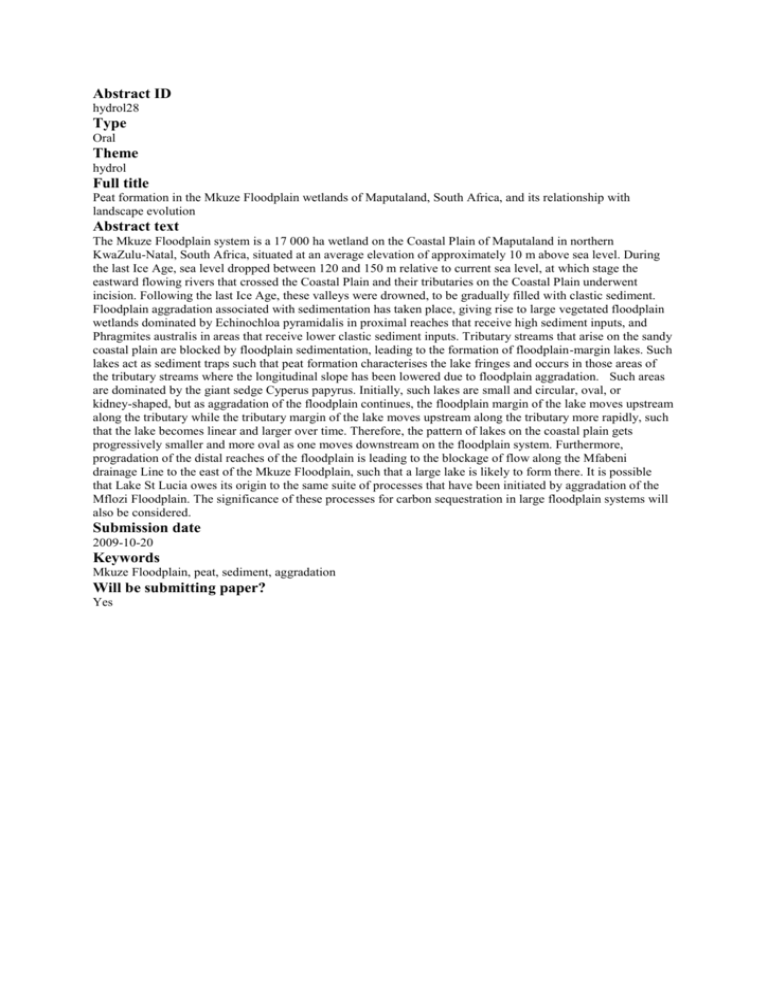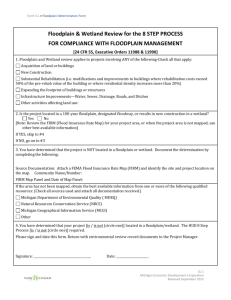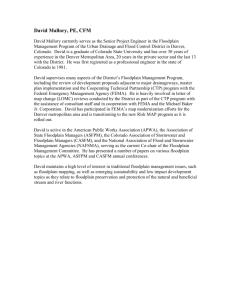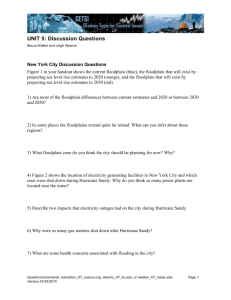Abstract ID hydrol28 Type Oral Theme hydrol Full title Peat formation
advertisement

Abstract ID hydrol28 Type Oral Theme hydrol Full title Peat formation in the Mkuze Floodplain wetlands of Maputaland, South Africa, and its relationship with landscape evolution Abstract text The Mkuze Floodplain system is a 17 000 ha wetland on the Coastal Plain of Maputaland in northern KwaZulu-Natal, South Africa, situated at an average elevation of approximately 10 m above sea level. During the last Ice Age, sea level dropped between 120 and 150 m relative to current sea level, at which stage the eastward flowing rivers that crossed the Coastal Plain and their tributaries on the Coastal Plain underwent incision. Following the last Ice Age, these valleys were drowned, to be gradually filled with clastic sediment. Floodplain aggradation associated with sedimentation has taken place, giving rise to large vegetated floodplain wetlands dominated by Echinochloa pyramidalis in proximal reaches that receive high sediment inputs, and Phragmites australis in areas that receive lower clastic sediment inputs. Tributary streams that arise on the sandy coastal plain are blocked by floodplain sedimentation, leading to the formation of floodplain-margin lakes. Such lakes act as sediment traps such that peat formation characterises the lake fringes and occurs in those areas of the tributary streams where the longitudinal slope has been lowered due to floodplain aggradation. Such areas are dominated by the giant sedge Cyperus papyrus. Initially, such lakes are small and circular, oval, or kidney-shaped, but as aggradation of the floodplain continues, the floodplain margin of the lake moves upstream along the tributary while the tributary margin of the lake moves upstream along the tributary more rapidly, such that the lake becomes linear and larger over time. Therefore, the pattern of lakes on the coastal plain gets progressively smaller and more oval as one moves downstream on the floodplain system. Furthermore, progradation of the distal reaches of the floodplain is leading to the blockage of flow along the Mfabeni drainage Line to the east of the Mkuze Floodplain, such that a large lake is likely to form there. It is possible that Lake St Lucia owes its origin to the same suite of processes that have been initiated by aggradation of the Mflozi Floodplain. The significance of these processes for carbon sequestration in large floodplain systems will also be considered. Submission date 2009-10-20 Keywords Mkuze Floodplain, peat, sediment, aggradation Will be submitting paper? Yes







